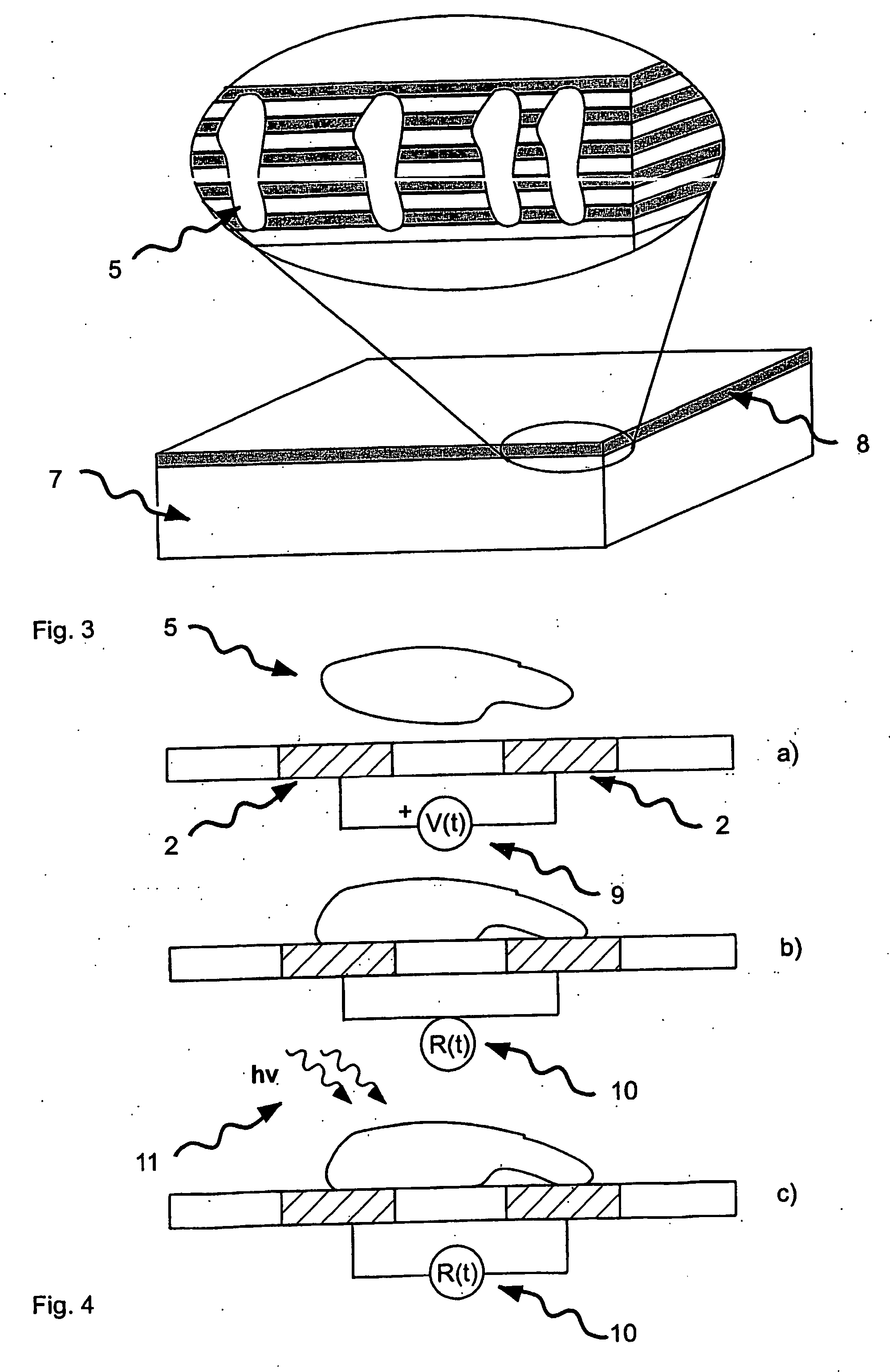Nanoelectrode device for chemical analysis
- Summary
- Abstract
- Description
- Claims
- Application Information
AI Technical Summary
Benefits of technology
Problems solved by technology
Method used
Image
Examples
Embodiment Construction
[0050] The object of the device according to the present invention is to selectively bind and detect a single molecule or a group of molecules from a mixture of molecules, preferably macromolecules such as in particular proteins, where the specific binding and detection can be readily tuned and altered to fit a selected molecule or group of molecules. The device is based on the characteristics of most molecules that they contain a characteristic multipole moment that incidentally may be approximated by a set of distributed dipoles. If the molecule or molecules of interest do not contain a characteristic dipole moment, such a dipole moment may be induced by applying a suitable electrical field. Thus, the device can be adapted so that it may be used in the analysis of virtually any molecular species.
[0051] The device is constructed by a set of spatially distributed electrodes, see FIG. 1. The electrochemical potential of the electrodes can be tuned individually or in groups, see FIGS...
PUM
| Property | Measurement | Unit |
|---|---|---|
| Length | aaaaa | aaaaa |
| Nanoscale particle size | aaaaa | aaaaa |
| Nanoscale particle size | aaaaa | aaaaa |
Abstract
Description
Claims
Application Information
 Login to View More
Login to View More - R&D
- Intellectual Property
- Life Sciences
- Materials
- Tech Scout
- Unparalleled Data Quality
- Higher Quality Content
- 60% Fewer Hallucinations
Browse by: Latest US Patents, China's latest patents, Technical Efficacy Thesaurus, Application Domain, Technology Topic, Popular Technical Reports.
© 2025 PatSnap. All rights reserved.Legal|Privacy policy|Modern Slavery Act Transparency Statement|Sitemap|About US| Contact US: help@patsnap.com



